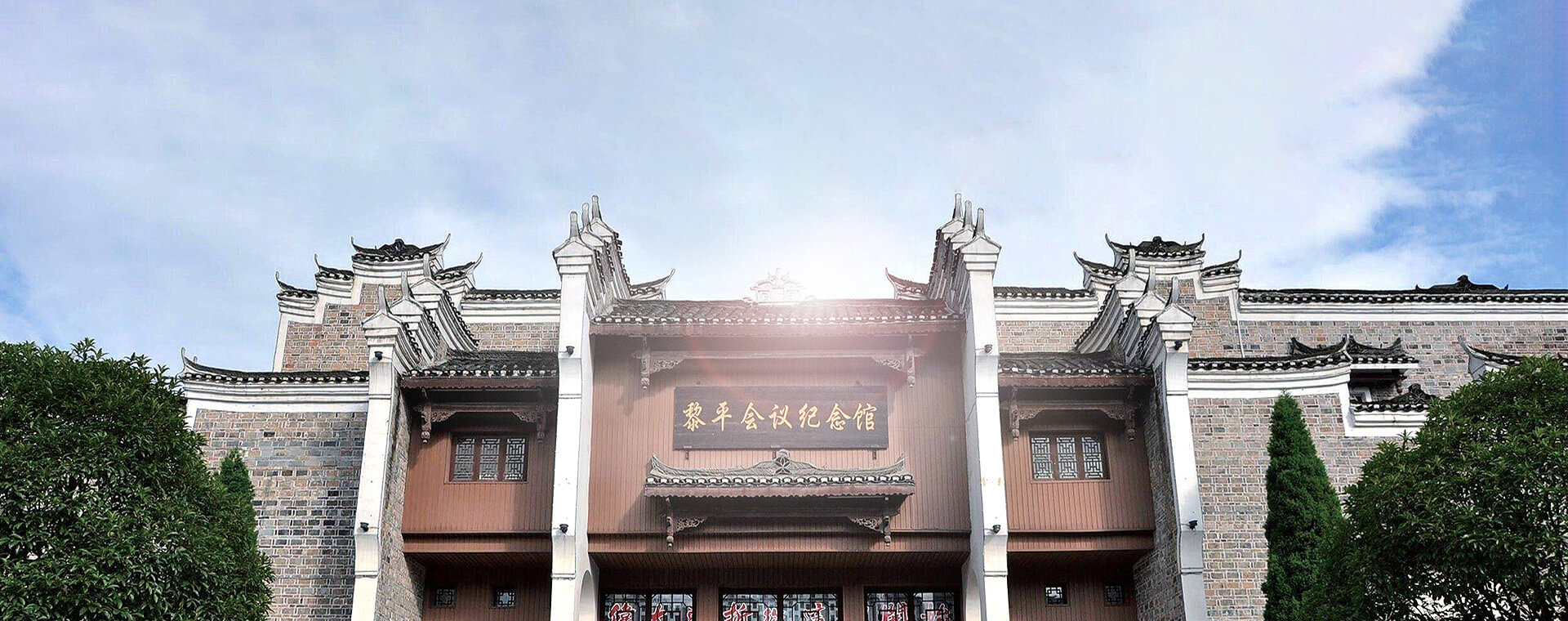Institutional information
| district: | Guizhou > Qiandongnan |
| categorisation: | Administrative Distr > Province |
| tel: | 00-86-0855—6221210 |
| website: | Click to visit the Chinese website |
| address: | No. 16 Nanquan Avenue, De Feng Subdistrict, Liping County, Qiandongnan Prefecture, Guizhou Province |
| working hours: | 8:30 AM – 12:00 PM; 2:00 PM – 5:30 PM (excluding weekends and public holidays) |
| video: | https://www.lp.gov.cn/masvod/public/2020/10/22/20201022_1754e228355_r1_500k.mp4 |
| description: | The history of Li Ping's establishment dates back to ancient times. During the Five Emperors period, it belonged to the Western Rong; during the Shang Dynasty, it was known as Gui Fang; |
| data statistics: | 120 browse,0commentaries,0message,1Pictures,0focus |
Seller Map
详细介绍
The history of Li Ping's establishment dates back to ancient times. During the Five Emperors period, it belonged to the Western Rong; during the Shang Dynasty, it was known as Gui Fang; during the Zhou Dynasty, it belonged to Chu; during the Qin Dynasty, it was part of the Qianzhong Commandery; during the Han Dynasty, it belonged to the Wuling Commandery; during the Jin Dynasty, it was part of the Tancun County; during the Liang Dynasty, it belonged to the Longbiao County; during the Chen Dynasty, it was part of the Yuanling Commandery; and during the Sui Dynasty, it belonged to the Chenzhou Commandery. During the Tang Dynasty, it

In the second year of the Taiping Xingguo era of the Song Dynasty (977), the Fulu Yongzong Chieftain's Office was established. In the 20th year of the Zhi Yuan era of the Yuan Dynasty (1283), the Gu Zhou Ba Wan Military and Civilian General Administration was established. In the second year of the Zhi Zhi era of the Yuan Dynasty (1322), the General Administration was abolished, and the Shang Liping Chieftain's Office was established. Liping thus gained its name and was under the jurisdiction of the Sizhou Xuanfu Office of the Huguang Province.
In the 18th year of the Hongwu era of the Ming Dynasty (1385), the Shang Liping and Ledun Dong Tusi were abolished, and the Wukai Garrison was established at Wunao Village (now De Feng Town), implementing military and political control, overseeing 5 prefectures, 2 military camps, and 14 Chieftain Offices. In the 11th year of the Yongle reign of the Ming Dynasty (1413), the Sizhou Xuanfu Bureau was abolished, and the Liping Prefecture was established at Guantuan (present-day Liping Zhai South), under the jurisdiction of the Guizhou Provincial Administration Bureau, overseeing seven chieftaincies: Tanxi, Bazhou, Guzhou, Caodi, Hongzhou Bolili, Fulu Yongcong, and Xishanyangdong. Liuping implemented separate military and civilian governance: the Wukai Garrison administered the garrisons and military camps, subordinate to Huguang Province; Liuping Prefecture administered the chieftaincies, subordinate to Guizhou Province.

In the ninth year of the Xuande reign (1434), the Xinhua Prefecture was merged into the Liping Prefecture, and the prefectural seat was moved from Guantuan to Wunao Village, making it a prefecture and garrison under the same jurisdiction. The number of chieftaincies under its jurisdiction increased from seven to fourteen, including the seven chieftaincies of Zhonglin Yandong, Xinhua, Huer, Longli, Liangzhai, Ouyang, and Chixi Nandong under the Xinhua Prefecture.
In the sixth year of the Zhengtong reign of the Ming Dynasty (1441), the Fulu Yongzong Prefecture was abolished, and Yongzong County was established, still under the jurisdiction of Liping Prefecture.
In the third year of the Yongzheng reign of the Qing Dynasty (1725), the Wukai and Tonggu Garrisons, which were under the jurisdiction of Huguang, were transferred to Liping Prefecture.
In the fifth year of the Yongzheng reign (1727), the Wukai Garrison was renamed Kaita County, and the Tonggu Garrison was renamed Jinping County. Both counties remained under the jurisdiction of Liping Prefecture. Additionally, Tianzhou County from Jingzhou Prefecture in Hunan Province was transferred to Liping Prefecture. In the eleventh year (1733), Tianzhou County was transferred to Zhenyuan Prefecture. In the eighth year (1730), the Deputy Magistrate of Guzhou Hall was established, under the jurisdiction of Liping Prefecture.

In the 35th year of the Qianlong reign (1770), the position of Magistrate of Xiajiang Hall was established.
In the 12th year of the Daoguang reign (1832), Jinsheng County was renamed Jinsheng Township, and a County Magistrate was appointed. By this time, Liping Prefecture administered two halls (Guzhou and Xiajiang), two counties (Kaita and Yongcong), and 14 chiefdoms (including Tanxi) with 512 villages.
In the 2nd year of the Republic of China (1913), all prefectures, states, and halls were uniformly renamed counties, thus abolishing Liping Prefecture and establishing Liping County and Hongzhou Sub-county (headquartered at Shuikou), both under the jurisdiction of Zhenyuan Circuit. The former Guzhou Hall under Liping Prefecture was renamed Rongjiang County, Xiajiang Hall was renamed Xiajiang County, Kaitao County was relocated to Jinsheng to establish Jinsheng County, and Yongcong County remained unchanged.
In 1923 (the 12th year of the Republic of China), the Zhenyuan Administrative Region was abolished, and Liping County became directly administered by the province.
In 1926 (the 15th year of the Republic of China), Liping County was divided into six districts: Central District (county seat), Second District (Aoshi), Third District (Zhongchao), Fourth District (Shuikou), Fifth District (Zaigun), and Sixth District (Zengchong). Each district was further divided into villages, neighborhoods, and blocks.
In the 21st year of the Republic of China (1932), Liping County administered eight districts and 135 townships.
In the 24th year of the Republic of China (1935), the 10th Administrative Inspection District of Guizhou was established in Liping, administering seven counties: Liping, Yongzong, Xiajiang, Rongjiang, Jinsheng, Tianzhou, and Jianhe.
In March of the 25th year of the Republic of China (1936), the 10th Administrative Inspection District of Guizhou was abolished, and Liping County was placed under the 8th Administrative Inspection District. Hongzhou County was abolished.
In November 1937, Liping County was under the jurisdiction of the Second Administrative Supervision District, which had eight districts, 45 townships, 249 villages, and 2,836 neighborhoods.
In the 28th year of the Republic of China (1939), the county was divided into eight districts, with townships abolished and joint villages established, comprising 37 joint villages and 222 villages.
In June 1941 (the 30th year of the Republic of China), Yongzong and Xiajiang counties were merged to form Congjiang County, with the county seat established in Jingmei Town. The former Yongzong County was redesignated as a town and transferred to Liping County. The areas of Xinhua, Longli, and Dicha originally under Liping County were transferred to Jingsheng County, Sebian was transferred to Rongjiang County, and Zengchong was transferred to Congjiang County. The villages north of Xiaopilín in the former Yongzong County and Shaodong and Cénmén in Rongjiang County were transferred to Liping County. In the same year, Liping County abolished districts and established townships, with the county comprising 23 townships, 192 villages, and 2,130 neighborhoods.
On March 1, 1950, Song Maoyu led the 152nd Regiment of the 51st Division of the Chinese People's Liberation Army to take control of Liping and establish the Liping County People's Government. On December 10 of the same year, the 556th Regiment of the 186th Division of the Chinese People's Liberation Army entered Liping, suppressed Yang Biao's armed rebellion, restored the Liping County People's Government, abolished the Republic of China regime and the baojia system, and established six districts—De Feng, Zhong Chao, Meng Yan, Mao Gong, Yong Cong, and Shui Kou—20 townships, and 179 administrative villages across the county.
In 1952, the Doushan Special Region was renamed the Duyun Special Region, and Liping County became part of the Duyun Special Region. By the end of the year, the six districts were reorganized into seven districts.
In 1953, the county was reorganized into nine districts and 107 small townships. The nine districts were: District One De Feng, District Two Zhong Chao, District Three Meng Yan, District Four Mao Gong, District Five Shuang Jiang, District Six Shui Kou, District Seven Long E, District Eight Hong Zhou, and District Nine Shang Zhong.
In early 1956, Liping County was transferred from the Duyun Special Region to the Zhenyuan Special Region. On July 23, the Qiandongnan Miao and Dong Autonomous Prefecture was established, with its prefectural seat in Kaili. The Zhenyuan Special Region was abolished, and Liping County came under the jurisdiction of the Qiandongnan Miao and Dong Autonomous Prefecture. It was divided into 9 districts and 61 townships.
In 1958, the county was divided into 9 districts, 60 townships, and 365 advanced agricultural production cooperatives. In September, the districts were abolished, and the county was reorganized into 21 people's communes composed of 365 advanced cooperatives. On November 15, the 21 people's communes were merged into 9 people's communes.
On April 2, 1967, the “Rebel Headquarters” declared the seizure of the party, government, financial, and cultural powers of the Liuping County Committee of the Communist Party of China and the Liuping County People's Committee. On April 28, the “Liuping County Revolutionary Committee of Mao Zedong Thought” was established, along with district and commune “Revolutionary Committees.” The same year, Chengguan Town was established, with the county comprising 66 communes and 1 town.
In February 1970, the county was restored to 9 districts, 66 communes, and 1 town.
On May 3, 1981, the 8th People's Congress of Liping County elected the Liping County People's Government, and the “Liping County Revolutionary Committee” ceased to exist.
On July 28, 1983, with the approval of the provincial people's government, Shuangjiang District was renamed Yandong District, Cenyang Commune was renamed Yashuang Commune, Xinhua Commune was renamed Pingjia Commune, Shaoxing Commune was renamed Zhaoxing Commune, Tuanjie Commune was renamed Caoping Commune, Qizhai Commune was renamed Qizhai Commune, and Qingguang Commune was renamed Jiliu Commune. The county was divided into 9 districts, 65 communes, 1 town, 394 production brigades, 3,148 production teams, 4 residents' committees, and 1,502 natural villages.

On May 22, 1984, the commune system was abolished, and township people's governments, villagers' committees, and villagers' groups were established. On July 20, De Feng Commune and Cheng Guan Town were abolished, and De Feng Town was established; the Shangzhong, Mengyan, Zhongchao, Shuikou, Hongzhou, Aoshi, and Gaotun communes were abolished and reorganized into 7 towns; the Pingzhai Commune was abolished and reorganized into Pingzhai Township and Liuhe Township; the Shunhua and Gundang communes were abolished and reorganized into Shunhua Yao Ethnic Township and Gundang Yao Ethnic Township. At the same time, the Cenpu Brigade of Gaoqing Commune was transferred to Gungdong Yao Ethnic Township. On September 3, De Feng Town was upgraded to a district-level town. The county had a total of 9 districts, 1 district-level town, 58 townships (including 2 Yao ethnic townships, 7 township-level towns, 395 village committees, 3,135 village groups, 4 street residents' committees, and 53 residents' groups.
In 1990, the county government approved the establishment of the De Feng Town Sub-district Office. That year, the county had 17 residents' committees and 403 villagers' committees.
On January 25, 1992, the provincial government issued Document No. 33 (1992) titled “Approval on the Administrative Regional Changes Involving the Establishment of Towns, Merger of Townships, and Abolition of Districts in Liping County”: Liping County abolished 9 districts, 1 district-level town, and 65 townships (towns), and reorganized them into 25 townships (towns), overseeing 403 village committees and 18 residents' committees.
On December 17, 1999, with the approval of the provincial government, it was agreed to abolish Yandong Township in Liping County and establish Yandong Town. It was also agreed to abolish Jiuchao Township in Liping County and establish Jiuchao Town. The county now comprises 10 towns, 15 townships (including 2 ethnic townships), 403 villages, 19 residents' committees, 1,490 natural villages, 3,088 village groups, and 114 residents' groups.
In 2012, with the approval of the Provincial People's Government, Zhaoxing Township, Long'e Township, and Shuangjiang Township were abolished and reorganized into Zhaoxing Town, Long'e Town, and Shuangjiang Town.
In 2013, the 403 village committees in the county were merged into 251 village committees.
In 2014, with the approval of the provincial government, Gaotun Town and De Feng Town were abolished, and Gaotun Subdistrict Office and De Feng Subdistrict Office were established.
In 2015, with the approval of the provincial government, Maogong Township, Yongcong Township, and Diping Township were dissolved and reorganized into Maogong Town, Yongcong Town, and Diping Town. The county now administers 9 townships (including 2 ethnic townships), 14 towns, 2 subdistricts, 251 village committees, and 21 residents' committees (community service centers).
In 2019, with the approval of the provincial government, Longxing Subdistrict was newly established in the Liping urban area. The county now administers 9 townships (including 2 ethnic townships), 14 towns, 3 subdistricts, 290 village committees, and 31 community residents' committees (community service centers).
